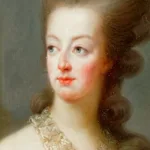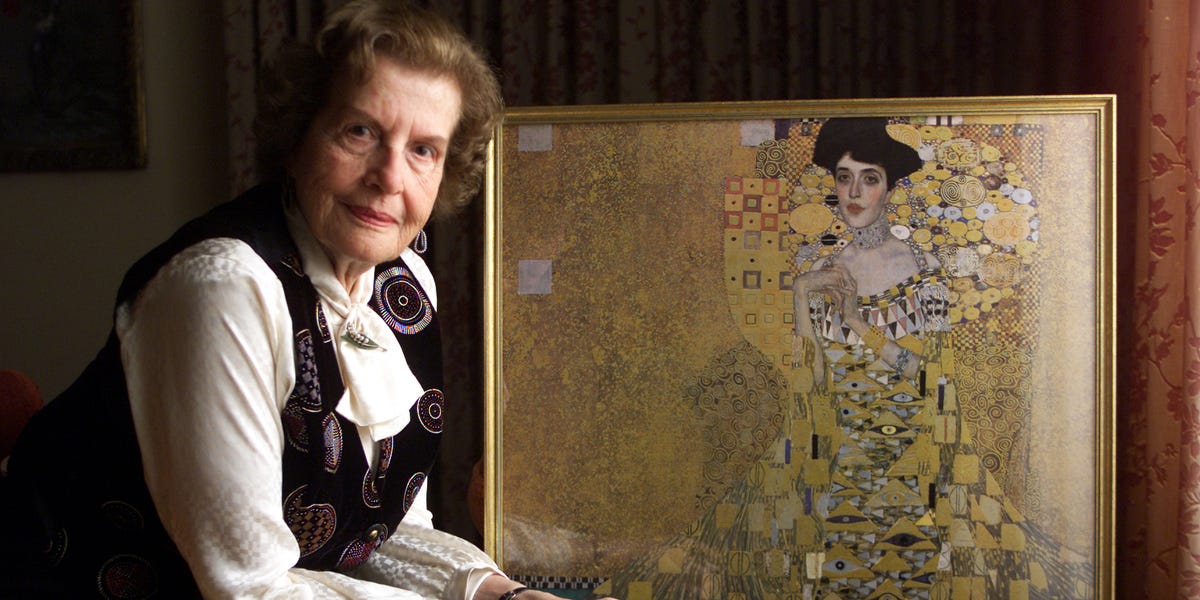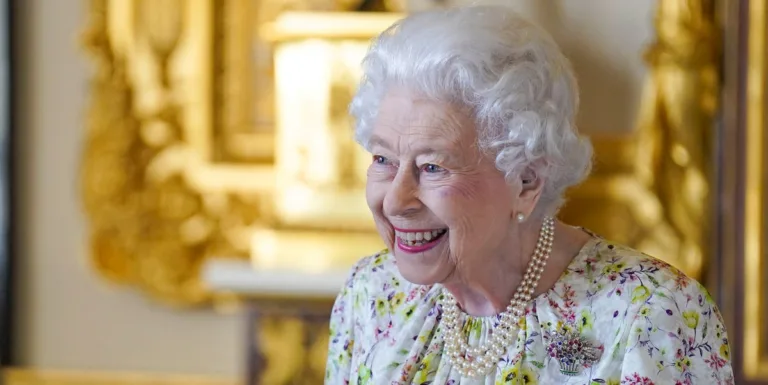“Woman In Gold” tells the captivating story of Maria Altmann’s tireless pursuit to reclaim a priceless piece of her family’s heritage. This captivating tale is not merely about art and restitution; it delves into themes of loss, resilience, and the enduring power of memory.
Maria Altmann was born into a wealthy Jewish family in Vienna, where she grew up surrounded by beauty and culture. Among her most cherished possessions were two portraits of her aunt Adele Bloch-bauer, painted by the renowned Austrian artist Gustav Klimt. However, when the Nazis annexed Austria, they ruthlessly confiscated these paintings and Countless Other Family Treasures. Forced to flee to America, Maria carried the memory of these stolen masterpieces with her, vowing to one day reclaim them.
This is where the real story of Woman In Gold begins. Driven by a deep sense of justice and love for her heritage, Maria embarked on a decades-long legal battle against the Austrian government. Her determination ultimately paved the way for the return of these masterpieces, including the iconic “Portrait of Adele Bloch-bauer I,” Which Became Known As “Woman In Gold.”
Maria Altmann: A Life Defined By Loss
Maria Altmann’s life was profoundly shaped by the events of World War Ii and the subsequent loss of her family’s Beloved Possessions. Born into a wealthy Jewish family in Vienna, she enjoyed a privileged childhood surrounded by art and culture. However, this idyllic world was shattered when the Nazis seized Austria, stripping Maria and her family of Their Home, Their Belongings, and most importantly, their sense of security.
Forced to flee her homeland, Maria carried with her the deep pain of displacement and the haunting memories of what she had lost. The stolen Klimt paintings were a constant reminder of this profound injustice. It was not simply about material possessions; it was about the loss of a heritage, a connection to her past, and a sense of belonging.
 Marie Antoinette Education: A Life of Privilege and Revolution
Marie Antoinette Education: A Life of Privilege and RevolutionThis experience of loss fueled Maria’s determination to reclaim what was rightfully hers. Her unwavering pursuit of justice became a defining aspect of her life, transforming her from a grieving woman into a courageous advocate for her family’s legacy and for the countless others who had suffered similar losses during the war. Her story is a testament to the enduring human spirit, its capacity to endure even the most unimaginable hardships and emerge stronger in the face of adversity.
The Nazi Seizure: Stealing Art, Stealing History
The Nazi seizure of Austria in 1938 marked a dark turning point for Maria Altmann and countless other Jewish families. With the rise of Nazism came an insidious campaign of cultural appropriation, targeting not just individuals but entire communities. Art was seen as a tool to be exploited, a means to bolster the Nazi ideology and enrich themselves.
For Maria Altmann, this meant the loss of cherished family heirlooms and, Most Importantly, two priceless portraits of her aunt Adele Bloch-bauer by Gustav Klimt. These paintings, symbols of her family’s wealth and cultural heritage, were stolen along with countless other works from Jewish collectors and museums across Austria. The Nazis sought to erase Jewish identity and replace it with their Own Twisted Vision, and the theft of art became a central element in this destructive campaign.
This systematic looting not only deprived individuals of their possessions but also Robbed History Itself. The woman in gold true story highlights how these stolen masterpieces represent More Than Just Monetary Value; they are tangible links to a Lost Past, testaments to a vibrant cultural heritage that was ruthlessly destroyed.
Reclaiming the Legacy: Legal Battles and Triumphs
Maria Altmann’s Journey To Reclaim Her Family’s legacy was a long and arduous one, filled with legal hurdles and bureaucratic roadblocks. Undeterred, she embarked on a determined campaign, seeking justice not only for herself but also for all those who had suffered similar losses during the war.
She faced resistance from the Austrian government, which initially refused to acknowledge its role in the Nazi lootings. However, Maria persevered, tirelessly gathering evidence and building her case. She enlisted the help of lawyers, historians, and art experts, assembling a compelling argument that highlighted the injustice of the situation and the rightful ownership of the stolen paintings.
Her unwavering dedication finally paid off. After years of legal battles, Maria Altmann achieved a historic victory when Austria agreed to return the Klimt masterpieces. This landmark ruling not only restored Her Family’s legacy but also set a precedent for other victims seeking restitution for Nazi-Looted Art. The woman in gold story became a symbol of hope and resilience, demonstrating that even against seemingly insurmountable odds, Justice Can Prevail.
Woman in Gold: A Masterpiece Returned
The return of “Woman In Gold” to its rightful owner marked a Momentous Occasion, not only for Maria Altmann but also for the art world and for history itself. This iconic portrait, with its shimmering gold leaf and mesmerizing depiction of Adele Bloch-bauer, had been absent from public view for decades. Its reappearance was met with widespread acclaim and served as a powerful reminder of the enduring legacy of Gustav Klimt’s work.
The painting found a new home in The Neue Galerie in Manhattan, owned by Ronald Lauder, who purchased it for a record-breaking $135 million in 2006. The gallery carefully restored “Woman In Gold” To Its Former Glory, ensuring that it would be displayed with the utmost respect and appreciation. Its presence in New York City has made it one of the most sought-after artworks in the world, attracting visitors from across the globe who come to marvel at its beauty and significance.
The story of “Woman In Gold” is a testament to the enduring power of art to transcend borders and time. It serves as a poignant reminder of the human cost of war and the importance of fighting for justice and restitution. The painting’s journey from stolen treasure to celebrated masterpiece is a powerful example of how art can be used to heal, educate, and inspire hope.
The Enduring Power Of Art And Memory
Maria Altmann’s tireless pursuit of justice for her family’s stolen art serves as a powerful reminder of the enduring connection between art and memory. The paintings were not simply objects; they represented tangible links to her past, To Her Heritage, and to the lives of those who had been tragically lost during the Holocaust.
Art has the unique ability to Evoke Emotions, Preserve History, and connect us to our shared Human Experience. For Maria Altmann, reclaiming these masterpieces was about more Than Just Recovering Stolen Property; it was about restoring a sense of wholeness, Honoring Her Family’s legacy, and keeping their memory alive. The real story of woman in gold demonstrates how art can act as a bridge between generations, allowing us to learn from the past and build a more compassionate future.
Ultimately, Maria Altmann’s story highlights the importance of preserving cultural heritage and fighting against injustice Wherever It May Exist. It is a testament to the Human Spirit’s ability to endure even the darkest times and emerge stronger through acts of courage, resilience, and unwavering determination.










